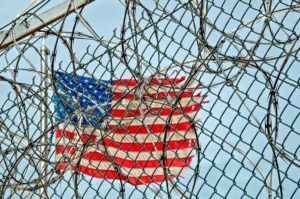
Growing up, we’re painted a picture of good vs evil in every aspect of our lives. We always like to think ourselves somewhere on the better end of that spectrum, in some way resisting against all the darkness of the world. It’s something we cling to dearly, always trying to juxtapose all the good with the bad. It’s what makes it so easy for people to judge, with such fury, small deviations from what is socially accepted at any given time.
In this vein, one of the most influential political ads in US history started what would be a “war on crime.” In the presidential election of 1988, George H.W. Bush published a condemning attack ad against his rival, Governor Dukakis, which focused on Dukakis’s stance on a furlough policy. Dukakis had vetoed a bill that was going to prevent criminals convicted of first-degree murder from being allowed a set number of weekends out of prison, on furlough. The attack ads were extremely powerful at painting Dukakis as “weak on crime” and highlighted one particularly vicious attack where a convicted murderer, Willie Horton, had escaped on one of his furlough weekends and committed another murder. The ads sparked a change in the way media covered attack ads and badmouthing in politics, and changed the verbiage of politics for decades. In the following 1992 elections, Bill Clinton sold the idea that he would lead an America that was “tough on crime,” and soon a number of legislation was passed that would start the “war on drugs.”
Anyone who has experienced addiction, either personally or by proximity to an addicted person knows the danger that is inherent with addictive substances. They also know just how strong of a stigma addiction carries, and that addiction is a serious disease, and not a failure of character, as the media had portrayed for years. It’s not a black and white issue—not a matter of good vs evil. The same chemicals that alleviate so much pain from the injured are often abused as prescription painkillers. Teenagers often begin drug habits with marijuana, but it’s also a source of symptom relief for some with seizures and epilepsy.
In this sense, America took a bold, and potentially harmful stance in its war on drugs by labeling all addicts, and all people in possession of dangerous substances as criminals. It’s a social and political standpoint that’s been challenged for far too long, and is only finally being torn apart in recent years. In March 2016, the US Senate passed the Comprehensive Addiction and Recovery Act (CARA), which would enforce addiction as a insurable disorder, the same way all other disorders are treated. This is a great step for addicted women, especially, who are now able to seek treatment under an oftentimes already burdened financial situation. In addition, the Obama administration opposes a recent Tennessee law making it a crime to use drugs while pregnant, recognizing that no one chooses to be addicted.
In comparison, Europe has been considering drug and alcohol addiction as a topic of medical health for much longer, and many organizations focus on community-driven care, where those facing addiction can recover amongst like-minded individuals in a structured community. Activist Rick Steve, who understands both US and European practices in addiction, speaks out on the absurdity of the US condemning “80,000 people” on “marijuana charges”, and advocates Europe’s way of measuring success by “harm reduction rather than incarceration.”
Organizations like New Directions for Women have been focusing on changing the way that the US views drug addiction by providing a community driven path to recovery, where women are encouraged to overcome their addiction, rather than being accused or blamed for suffering through it. If you or someone you know is in need of care for their addiction, please do not hesitate to reach out to New Directions for Women at (800) 939-6636.



